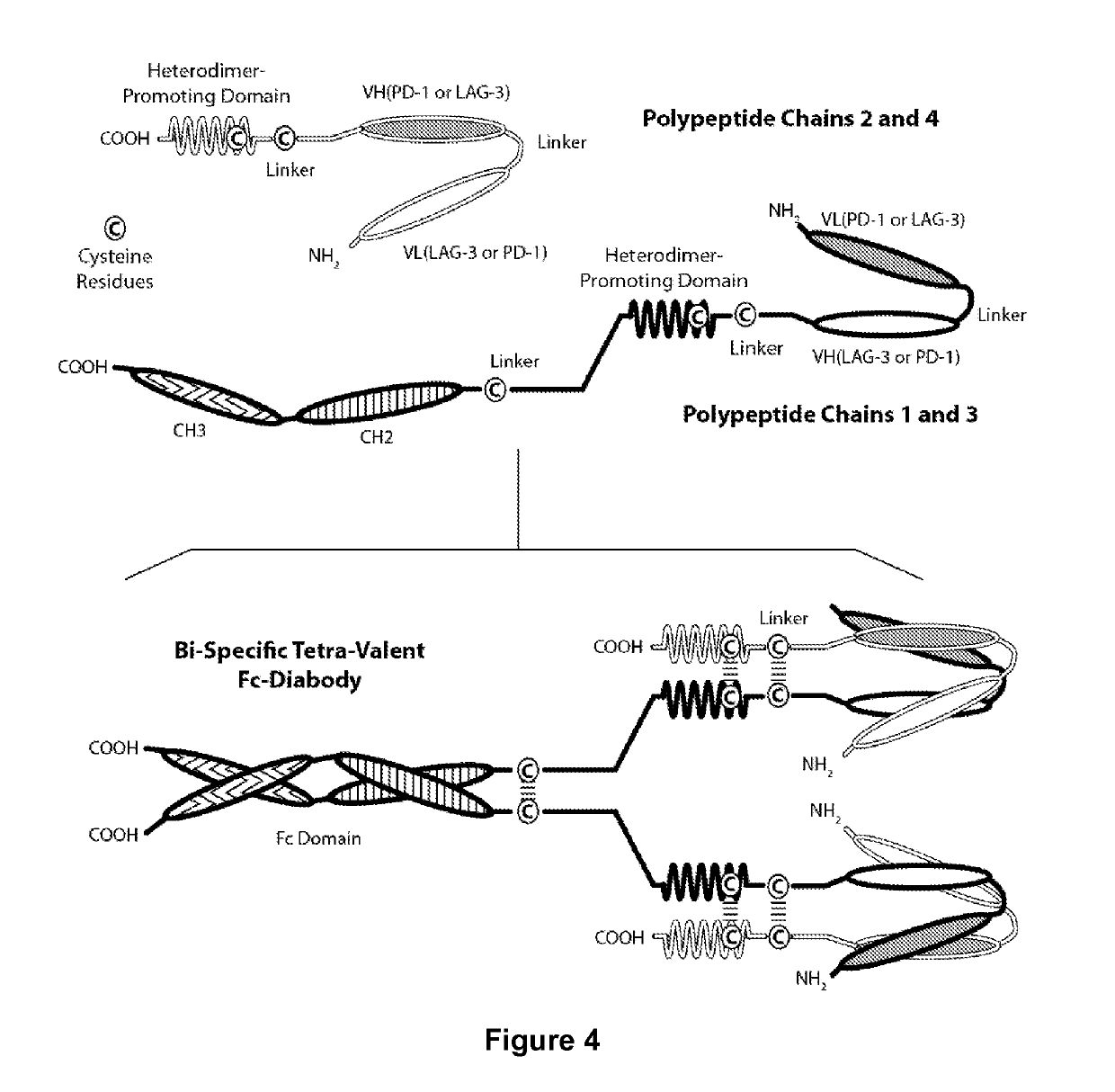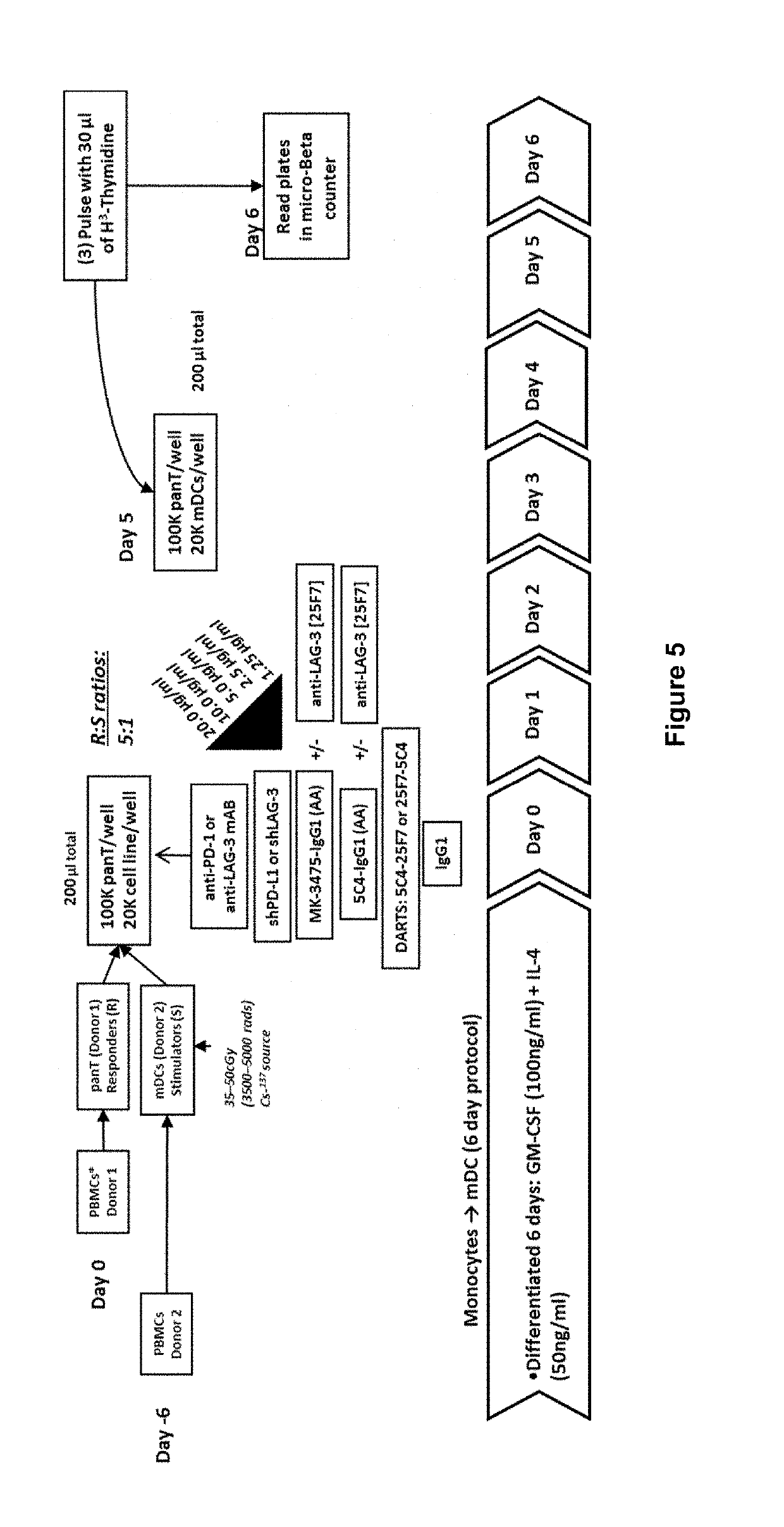Covalently Bonded Diabodies Having Immunoreactivity with PD-1 and LAG-3, and Methods of Use Thereof
a technology of covalent bonding and diabodies, which is applied in the field of bispecific diabodies, can solve the problems of hampered immune suppressive mechanisms in the tumor microenvironmen
- Summary
- Abstract
- Description
- Claims
- Application Information
AI Technical Summary
Benefits of technology
Problems solved by technology
Method used
Image
Examples
example 1
Production and Properties of PD-1×LAG-3 Bi-Specific Diabodies
[0166]Within the context of the allo-MLR assay, T-cells are induced to proliferate in response to HLA-mismatching (Latchman, Y.E. et al. (2004) “PD-L1-Deficient Mice Show That PD-L1 On T-Cells, Antigen-Presenting Cells, And Host Tissues Negatively Regulates T-Cells.” Proc. Natl. Acad. Sci. (U.S.A.) 101(29):10691-10696; Wang, W. et al. (2008) “PD-L1 / PD-1 Signal Deficiency Promotes Allogeneic Immune Responses And Accelerates Heart Allograft Rejection,” Transplantation 86(6):836-44) or mitogenic / pharmacological stimulation. Agonist antibodies that target costimulatory molecules are known to induce proliferative responses by re-enforcing T-cell signaling and stabilizing transcription factors that promote or drive T-cell effector function (Melero, I. et al. (2013) “Agonist Antibodies to TNFR Molecules That Costimulate T and NK Cells,” Clin. Cancer Res. 19(5):1044-1053). Similarly, antagonist antibodies that target key checkpoi...
PUM
 Login to View More
Login to View More Abstract
Description
Claims
Application Information
 Login to View More
Login to View More - R&D
- Intellectual Property
- Life Sciences
- Materials
- Tech Scout
- Unparalleled Data Quality
- Higher Quality Content
- 60% Fewer Hallucinations
Browse by: Latest US Patents, China's latest patents, Technical Efficacy Thesaurus, Application Domain, Technology Topic, Popular Technical Reports.
© 2025 PatSnap. All rights reserved.Legal|Privacy policy|Modern Slavery Act Transparency Statement|Sitemap|About US| Contact US: help@patsnap.com



